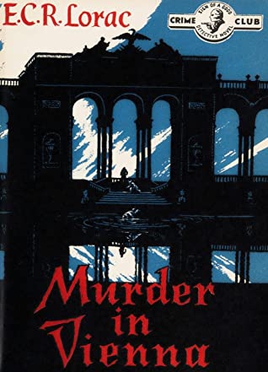
Murder in Vienna is a 1956 detective novel by E.C.R. Lorac, the pen name of the British writer Edith Caroline Rivett. It is the forty second in her long-running series featuring Chief Inspector MacDonald of Scotland Yard, one of the more conventional detectives of the Golden Age of Detective Fiction. It has an unusual foreign setting, post-war Vienna still occupied by the Allies, compared to the rest of the series which generally takes place in London or the English countryside. Maurice Richardson reviewing the novel for The Observer described it as the "usual solid job".
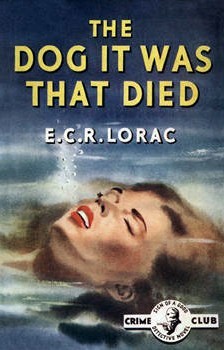
The Dog It Was That Died is a 1952 detective novel by E.C.R. Lorac, the pen name of the British writer Edith Caroline Rivett. It is the thirty sixth in her long-running series featuring Chief Inspector MacDonald of Scotland Yard, one of the more conventional detectives of the Golden Age of Detective Fiction. It was published by the Collins Crime Club.
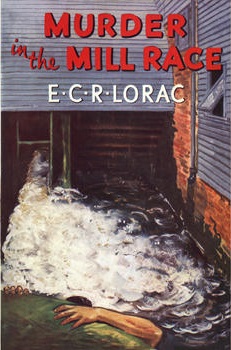
Murder in the Mill-Race is a 1952 detective novel by E.C.R. Lorac, the pen name of the British writer Edith Caroline Rivett. It is the thirty seventh in her long-running series featuring Chief Inspector MacDonald of Scotland Yard, one of the numerous detectives of the Golden Age of Detective Fiction. It was released in the United States under the alternative title Speak Justly of the Dead. Originally published by Collins Crime Club, it was reissued in 2019 by the British Library Publishing as part of a group of crime novels from the Golden Age of Detective Fiction.

Still Waters is a 1949 detective novel by E.C.R. Lorac, the pen name of the British writer Edith Caroline Rivett. It is the thirty second in her long-running series featuring Chief Inspector MacDonald of Scotland Yard, one of the more orthodox detectives of the Golden Age of Detective Fiction.
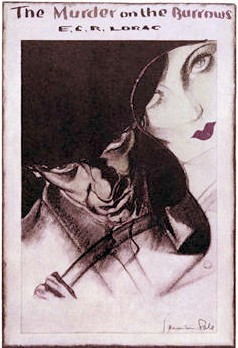
The Murder on the Burrows is a 1931 detective story by E.C.R. Lorac, the pen name of the British writer Edith Caroline Rivett. Her debut novel, it introduced the character of Chief Inspector MacDonald of Scotland Yard who went on to appear in a lengthy series of novels during the Golden Age of Detective Fiction. Although initially named James this is changed to Robert in later books. It takes place around Bideford Bay in North Devon where the author had spent several holidays.

Shroud of Darkness is a 1954 detective novel by E.C.R. Lorac, the pen name of the British writer Edith Caroline Rivett. It is the thirty-ninth in her long-running series featuring Chief Inspector Macdonald of Scotland Yard, one of the more orthodox detectives of the Golden Age of Detective Fiction.

Let Well Alone is a 1954 detective novel by E.C.R. Lorac, the pen name of the British writer Edith Caroline Rivett. It is the fortieth in her long-running series featuring Chief Inspector MacDonald of Scotland Yard, one of the more orthodox detectives of the Golden Age of Detective Fiction.

Death at Dyke's Corner is a 1940 detective novel by E.C.R. Lorac, the pen name of the British writer Edith Caroline Rivett. It is the nineteenth in her long-running series featuring Chief Inspector MacDonald of Scotland Yard, a Golden Age detective who relies on standard police procedure to solve his cases.

The Sixteenth Stair is a 1942 detective novel by E.C.R. Lorac, the pen name of the British writer Edith Caroline Rivett. It is the twenty second in her long-running series featuring Chief Inspector MacDonald of Scotland Yard, a Golden Age detective who relies on standard police procedure to solve his cases.

Death of an Author is a 1935 detective novel by E.C.R. Lorac, the pen name of the British writer Edith Caroline Rivett. It is a rare standalone book by Lorac, not featuring Chief Inspector MacDonald of Scotland Yard who appeared in a lengthy series of novels during the Golden Age of Detective Fiction. It was her final novel published by Sampson Low before she switched to the more prestigious Collins Crime Club with whom she remained for the rest of her career.
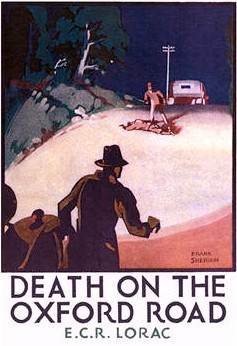
Death on the Oxford Road is a 1933 detective novel by E.C.R. Lorac, the pen name of the British writer Edith Caroline Rivett. It is the fifth book featuring Chief Inspector MacDonald of Scotland Yard who appeared in a lengthy series of novels during the Golden Age of Detective Fiction.

Murder in Chelsea is a 1934 detective novel by E.C.R. Lorac, the pen name of the British writer Edith Caroline Rivett. It is the seventh book featuring Chief Inspector MacDonald of Scotland Yard who appeared in a lengthy series of novels during the Golden Age of Detective Fiction.
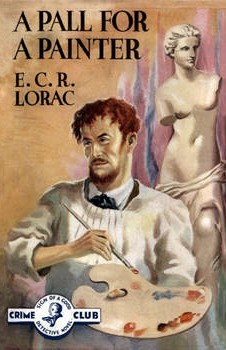
A Pall for a Painter is a 1936 detective novel by E.C.R. Lorac, the pen name of the British writer Edith Caroline Rivett. It is the tenth in her long-running series featuring Chief Inspector MacDonald of Scotland Yard, a Golden Age detective who relies on standard police procedure to solve his cases.

Crime Counter Crime is a 1936 detective novel by E.C.R. Lorac, the pen name of the British writer Edith Caroline Rivett. It is the ninth in her long-running series featuring Chief Inspector MacDonald of Scotland Yard, a Golden Age detective who relies on standard police procedure to solve his cases. It was her first novel published by Collins Crime Club after switching from Sampson Low, partly on the success of the previous entry in the series The Organ Speaks. Collins then published the remainder the series.

Murder in St. John's Wood is a 1934 detective novel by E.C.R. Lorac, the pen name of the British writer Edith Caroline Rivett. It is the sixth book featuring Chief Inspector MacDonald of Scotland Yard who appeared in a lengthy series of novels during the Golden Age of Detective Fiction.

The Case of Colonel Marchand is a 1933 detective novel by E.C.R. Lorac, the pen name of the British writer Edith Caroline Rivett. It is the fourth book featuring Chief Inspector MacDonald of Scotland Yard who appeared in a lengthy series of novels during the Golden Age of Detective Fiction.

Relative to Poison is a 1947 detective novel by E.C.R. Lorac, the pen name of the British writer Edith Caroline Rivett. It is the twenty ninth in her long-running series featuring Chief Inspector MacDonald of Scotland Yard, one of the detectives of the Golden Age of Detective Fiction who relies on standard police procedure to solve his cases.

Death on the Riviera is a 1952 detective novel by the British writer John Bude. It was part of a series featuring Superintendent Meredith of Scotland Yard. While Bude set many of his earlier novels in regional England, after the Second World War they made increasing use of more exotic, Continental settings. In 2016 it was reissued by the British Library Publishing as part of a group of republished crime novels from the Golden Age of Detective Fiction.

The Lake District Murder is a 1935 detective novel by the British writer John Bude. It is the first in a series of novels featuring Chief Inspector Meredith, promoted at the end of case to Superintendent. Set in the Lake District of Northern England, it shows the influence of Freeman Wills Crofts's Inspector French novels by featuring a detective who methodically breaks down the alibis of his suspects. In 2014 it was reissued by the British Library Publishing as part of a group of republished crime novels from the Golden Age of Detective Fiction.

Nightmare is a 1932 thriller novel by the Irish-born writer Lynn Brock. It is an inverted detective story, and a stand alone work for an author best known for his series featuring the Golden Age detective Colonel Gore.




















